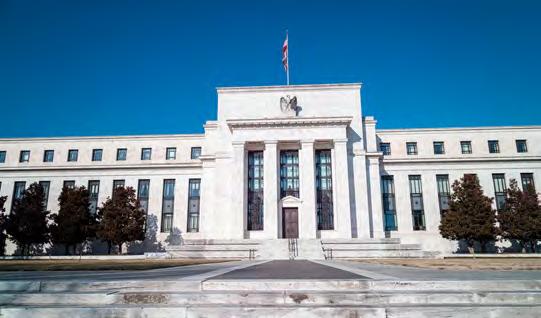
1 minute read
Find out why the Fed’s preferred inflation measure upset markets
The US central bank has consistently said it has more to do to tame inflation and the data is likely to be volatile
The latest data (24 February) shows inflation surprisingly accelerated in January as measured by PCE (personal consumption expenditure) the US Federal Reserve’s favourite inflation gauge. This went against expectations for a continued fall and, once again, undermined hopes for a pivot away from rate hikes by the Fed.
PCE measures how much consumers are paying for goods and services with the annual rate increasing to 5.4% from 5.3% in December 2022.
The Fed prefers to focus on core PCE which strips out volatile components such as food and energy costs. The bank believes PCE is a broader and timelier measure than CPI (consumer price index).
The main reason is because CPI represents a fixed basket of consumer items which changes once a year. PCE is based on a basket of goods that consumers buy every month.
Annualised core PCE inched up to 4.7% from 4.6% while the monthly measure increased to 0.6% from 0.4%, the biggest jump since August 2022. Meanwhile consumer spending which accounts for more than two-thirds of GDP (gross domestic product) increased by 1.8%, the largest increase since March 2021.
The strong data capped off a disappointing week for both investors in shares and bond investors alike. Markets have started pricing in a higher chance of a 50 basis points interest rate rise.
According to CME’s (CME:NASDAQ) Fedwatch tool, at the end of January there were no expectations in the market for such a rise when the Fed next meets on 22 March.
Following the strong PCE reading, odds for a 50 basis point move have increased to a 25% while odds for a 25 basis point increase have dropped from 84% to 75%.
The latest evidence adds to a string of recent positive data the most surprising of which was January’s non-farm payrolls (3 February) which showed the US economy added 517,000 jobs compared with market expectations of just 187,000.
The news stopped the new year rally in its tracks which had seen the S&P 500 notch-up doubledigit percentage gains and the technology focused Nasdaq gain 18%.
Meanwhile US 10-year Treasury yields have risen (prices move in opposite direction) from just under 3.4% before the jobs data to 3.9%.
The setback in the Fed’s fight against inflation will be disappointing given hopes it was finally dissipating. At the press conference following the last monetary policy meeting (31 January) Fed chair Jerome Powell mentioned disinflation several times when answering questions.
The next important data releases for the economy which will be keenly watched and come out ahead of the next policy meeting are the monthly non-farm payrolls jobs for February (10 March) and CPI on 14 March. [MG]









